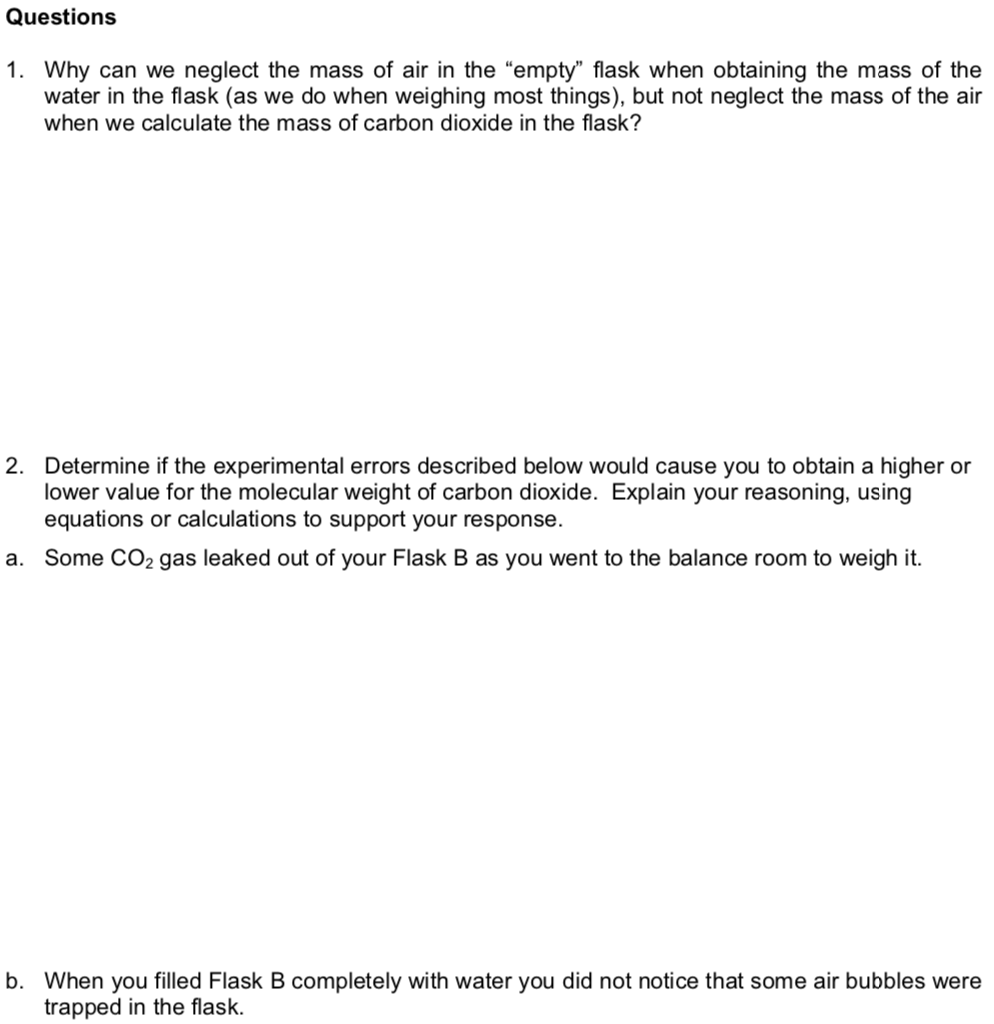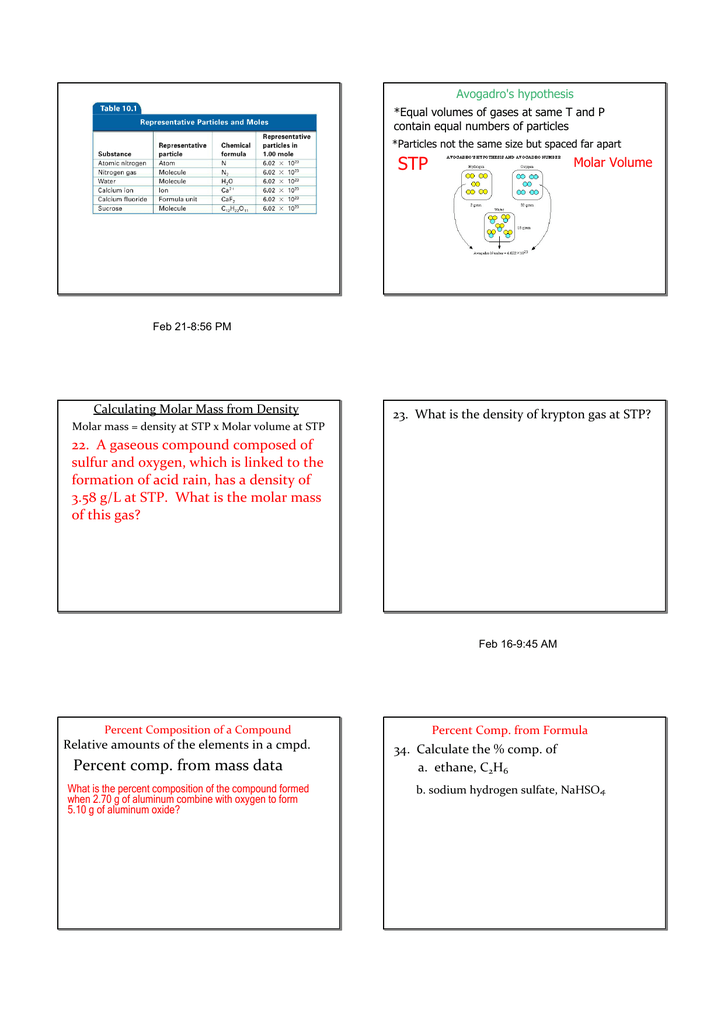Density Of Air At Stp G L Major geomagnetic storms are caused by unusually intense solar wind southward magnetic fields that impinge upon the Earth's magnetosphere . How can we predict the occurrence of future interplanetary events? Do we currently know enough of the underlying physics and do we have sufficient observations of solar wind phenomena that will impinge upon the Earth's magnetosphere? We view this as the most important challenge in space weather. We discuss the case for magnetic clouds , interplanetary sheaths upstream of interplanetary coronal mass ejections , corotating interaction regions and solar wind high-speed streams . The sheath- and CIR-related magnetic storms will be difficult to predict and will require better knowledge of the slow solar wind and modeling to solve.
For interplanetary space weather, there are challenges for understanding the fluences and spectra of solar energetic particles . This will require better knowledge of interplanetary shock properties as they propagate and evolve going from the Sun to 1 AU , the upstream slow solar wind and energetic "seed" particles. Dayside aurora, triggering of nightside substorms, and formation of new radiation belts can all be caused by shock and interplanetary ram pressure impingements onto the Earth's magnetosphere. The forecasting of extreme events (extreme shocks, extreme solar energetic particle events, and extreme geomagnetic storms ) are also discussed. Energetic particle precipitation into the atmosphere and ozone destruction are briefly discussed. For many of the studies, the Parker Solar Probe, Solar Orbiter, Magnetospheric Multiscale Mission , Arase, and SWARM data will be useful.
Interplanetary shocks have a variety of effects on both interplanetary space and the Earth's magnetosphere. It is important for the reader to note that these space weather phenomena can occur with or without the occurrence of magnetic storms. Shock and magnetic storm intensities are related, but only in a loose sense. The physical mechanisms for energy transfer for different phenomena are different. Solar cosmic ray events can occur with or without magnetic storms (Halford et al., 2015, 2016; Mays et al., 2015; Foster et al., 2015). Some of the major extreme space weather topics will be addressed below.
When a shock is formed, it compresses the upstream plasma and magnetic fields. The compressed plasma and magnetic fields downstream of the shock are the "sheath". The shock and sheath are not part of the CME/ICME.
The origin of these plasma and magnetic fields is the slow solar wind altered by shock compression. This is important to understand if one wishes to predict magnetic storms caused by interplanetary sheath southward magnetic fields. It should be noted that "slow" ICMEs have been detected at 1 AU (Tsurutani et al., 1994a).
These phenomena do not have upstream shocks and sheaths, as expected. However, the southward MC magnetic fields still cause magnetic storms. Several spacecraft missions have been mentioned in relation to some forecasting problems. However, the reader should note that the missions and/or their data alone will not solve these problems.
It will either be the scientists on these missions or perhaps totally independent scientists who will make the most progress on these problems. An example is magnetic storms caused by interplanetary shocks/sheaths and CIRs. How long will it take scientists to be able to accurately forecast the time of occurrence of the storm and the intensity ? Here we will not make an estimate of how long this will take.
Shock acceleration of solar flare particles is clearly a fundamental part of space weather. How long will scientists take to be able to predict the fluence and spectral shape at a variety of distances away from the Sun? This is a fundamental problem which space agencies are not currently directly addressing.
With the advent of rockets and satellites, the near-Earth interplanetary medium has been probed by magnetic field, plasma, and energetic particle detectors. The Sun has been viewed at many different wavelengths. The Earth's auroral regions have recently been viewed by UV imagers, giving a global view of auroras including the dayside. The most useful part of this review will be to focus on what future advances in space weather might be in the next 10 to 25 years. In particular, we will mention which outstanding problems the Parker Solar Probe, Solar Orbiter, MMS, Arase, ICON, GOLD, and SWARM data might be useful in solving. From the geomagnetic equator , the lowest in recorded history.
Since this event has been used as an example of extreme space weather and events of this type are a problem for U.S. Homeland Security, we felt that there should be a separate section on this topic, Sect. We also discuss the possibility of events even larger than the Carrington storm occurring. Why is this topic covered in this paper?
Section 9 gives our summary/conclusions for the physics and the possibility of forecasting space weather events. Section 10 is a glossary of space weather terms used by researchers in the field. Most of the definitions were carefully constructed in a previous book . These should be useful for an ionospheric researcher looking up solar terms.
It could be particularly useful for the non-space plasma readership as well. In the magnetosphere, a region of current that flows near the geomagnetic equator in the outer belt of the two Van Allen radiation belts. The current is produced by the gradient and curvature drift of the trapped charged particles of energies of 10 to 300 keV. The ring current is greatly augmented during magnetic storms because of the hot plasma injected from the magnetotail and upwelling oxygen ions from the ionosphere. Further acceleration processes bring these ions and electrons up to ring current energies.
The ring current causes a worldwide depression of the horizontal geomagnetic field during a magnetic storm. During the declining phase of the solar cycle a different type of solar and interplanetary activity dominates the physical cause of magnetic storms, that of corotating interaction regions . HSSs emanating from coronal holes interact with the slow solar wind and form CIRs at their interaction interfaces. The magnetic storms caused by CIRs are quite different from storms caused by ICMEs and/or their sheaths.
Figure 6 shows the difference in profiles of two different types of magnetic storms. The profile of a CIR magnetic storm is shown at the bottom and that of a shock sheath ahead of an ICME MC magnetic storm on top. It should be noted that a fast reverse wave (here by "reverse" we mean that the wave is propagating in the solar direction) was detected during the Fig. It is identified as the red vertical line on 8 November. This reverse wave caused a decrease in the MC magnetic field and thus the start of the recovery phase of the magnetic storm. The reader should note that fast reverse waves and shocks are also important for geomagnetic activity.
A detailed discussion of shock and discontinuity effects on geomagnetic activity can be found in Tsurutani et al. . Regions of the magnetosphere roughly 1.2 to 6 Earth radii above the equator in which charged particles are stably trapped by closed geomagnetic field lines. The inner belt's maximum proton density lies near 5000 km above the Earth's surface. Inner belt protons and electrons originate from the decay of secondary neutrons created during collisions between cosmic rays and upper atmospheric particles.
The outer belt extends on to the magnetopause on the sunward side and to about 6 Earth radii on the nightside. The altitude of maximum proton density is near – km. Outer belt protons and electrons are lower energy . The origin of the particles is a mixture of the solar wind and the ionosphere. The outer belt is also characterized by highly variable fluxes of energetic electrons.
The radiation belts are often called the "Van Allen radiation belts" because they were discovered in 1958 by a research group at the University of Iowa led by Professor J. A. Van Allen. NT) magnetic storms that occurred during solar cycle 23. The solar wind drags the interconnected magnetic fields and plasma downstream . The open magnetic fields then reconnect in the tail. Reconnection leads to strong convection of the plasma sheet into the nightside magnetosphere.
A visual phenomenon that occurs mainly in the high-latitude night sky. Auroras occur within a band of latitudes known as the auroral oval, the location of which is dependent on the intensity of geomagnetic activity. Auroras are a result of collisions between precipitating charged particles and atmospheric atoms and molecules, exciting the atmospheric constituents. The charged particles come from the outer parts of the magnetosphere and are guided by the geomagnetic field. Each gas emits its own characteristic radiation when bombarded by the precipitating particles. The auroral altitude range is 80 to 500 km, but typical auroras occur 90 to 250 km above the ground.
The color of the typical aurora is yellow–green, from a specific transition line of atomic oxygen. Auroral light from lower levels in the atmosphere is dominated by blue and red bands from molecular nitrogen and molecular oxygen. Above 250 km, auroral light is characterized by a red spectral line of atomic oxygen.
To an observer on the ground, the combined light of these three fluctuating primary colors produces an extraordinary visual display. Auroras in the Northern Hemisphere are called the aurora borealis or "northern lights". Auroras in the Southern Hemisphere are called the aurora australis. The patterns and forms of the aurora include quiescent "arcs", rapidly moving "rays" and "curtains", "patches", and "veils". However, the fundamental issue of space weather prediction for magnetic storms is the direction and intensity of the magnetic field in both the MC and upstream sheath.
These topics still remain a challenge. These Mach numbers get close to expected supernova shock values. Why have such strong shocks not been observed at 1 AU? If such events are possible, what would the energetic particle fluences be? Experts on shock particle acceleration will hopefully answer this complex question. It is well known that such solar flare particles enter the polar regions of the Earth's atmosphere and cause radio blackouts.
Will extreme solar flare particle fluence precipitation cause different ionospheric effects other than those known today? This latter question might be addressed by ionospheric modelers. Corotating interaction region .
An interplanetary region of high magnetic fields and plasma densities created by the interaction of a high-speed solar wind stream with the upstream slow solar wind. The antisunward portion of the CIR is compressed slow solar wind plasma and magnetic fields, and the sunward portion is compressed fast solar wind plasma and magnetic fields. The two regions of the CIR are separated by a tangential discontinuity.
The concept of magnetic reconnection is introduced first for the non-space plasma reader. Magnetic reconnection is the physical process responsible for transferring solar wind energy into the magnetosphere during magnetic storms. We have organized the rest of the paper by discussing space weather phenomena by solar cycle intervals.
However, it should be mentioned that this is not totally successful since some phenomena span all parts of the solar cycle. Extremely energetic charged particles or electromagnetic radiation, primarily originating outside of the Earth's magnetosphere. Cosmic rays usually interact with the atoms and molecules of the atmosphere before reaching the surface of the Earth. The nuclear interactions lead to formation of daughter products, and they in turn to granddaughter products, etc. Thus, there is a chain of reactions and a "cosmic ray shower". Some cosmic rays come from outside the solar system, while others are emitted from the Sun in solar flares.
See also Anomalous cosmic ray, Energetic particle, and Solar energetic particle event. This is a very difficult task since knowledge of the entire slow solar wind plasma from the Sun to 1 AU will be required for accurate forecasting. But again, the Parker Solar Probe and Solar Orbiter may help in developing two points of measurements for modeling of specific events. There are many important questions about PPEFs which are almost always present during major magnetic storms. As previously mentioned, "why are the electric fields not shielded out?
" What is the mechanism for generating PPEFs, wave propagation from the polar ionosphere as suggested by Kikuchi and Hashimoto or a more global picture as Fig. 25 and Nishida and Jacobs suggest? Figure 25 is a simple schematic. What are the real local time dependences of the PPEF? Does this vary from storm to storm, and if so, why? Why does the relative PPEF magnitude vary from one storm to the next?
Again, future spacecraft and ground-based studies will be able to help answer these questions. This figure is a superposed epoch analysis , the result of 35 HILDCAA events in solar cycle 23, from 1995 to 2008, which are not preceded by magnetic storms. The exclusion of magnetic storms was done to avoid contamination by storm-time particle acceleration (by intense convection/compression). The zero-epoch time corresponds to the HILDCAA onset time. Here the "strict" definition of HILDCAAs was used to define the onset times. A shock wave is characterized by a discontinuous change in pressure, density, temperature, and particle streaming velocity, propagating through a compressible fluid or plasma.
Fast collisionless shock waves occur in the solar wind when fast solar wind overtakes slow solar wind, with the difference in speeds being greater than the magnetosonic speed. Collisionless shock thicknesses are determined by the proton and electron gyroradii rather than the collision lengths. See also Diffusive shock acceleration and Solar wind shock. Details concerning the shocks and compressions can be found in the original paper for readers who are interested.
What is important here is how intense interplanetary magnetic fields are created. They can come from the MCs themselves or the sheaths, as shown here. However, in this case the southward magnetic fields that caused the magnetic storm came from the MC and not the sheath.



























No comments:
Post a Comment
Note: Only a member of this blog may post a comment.